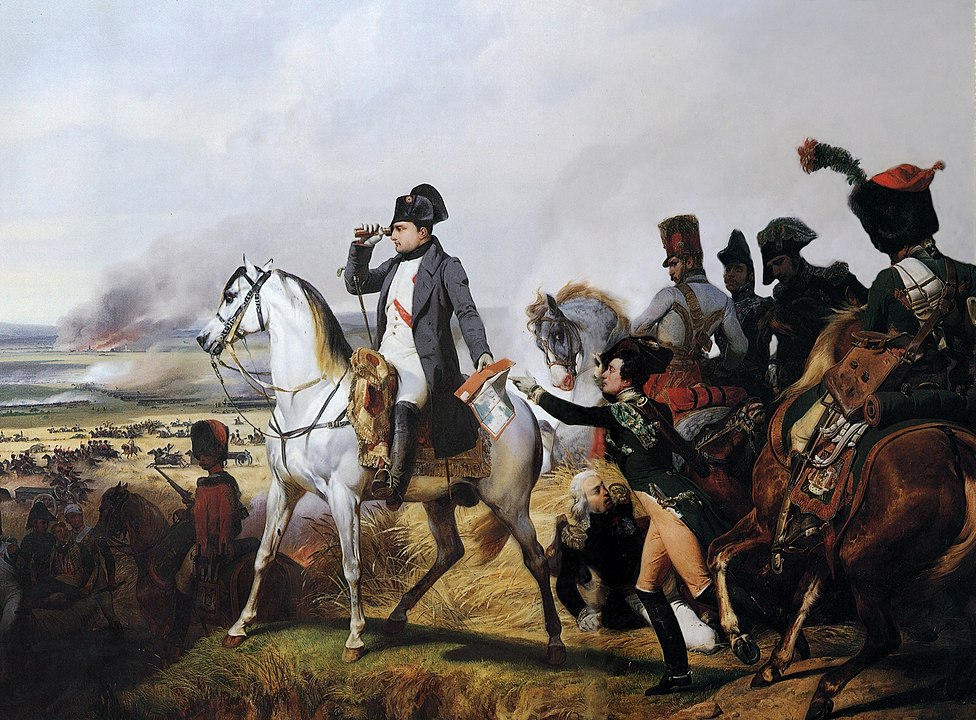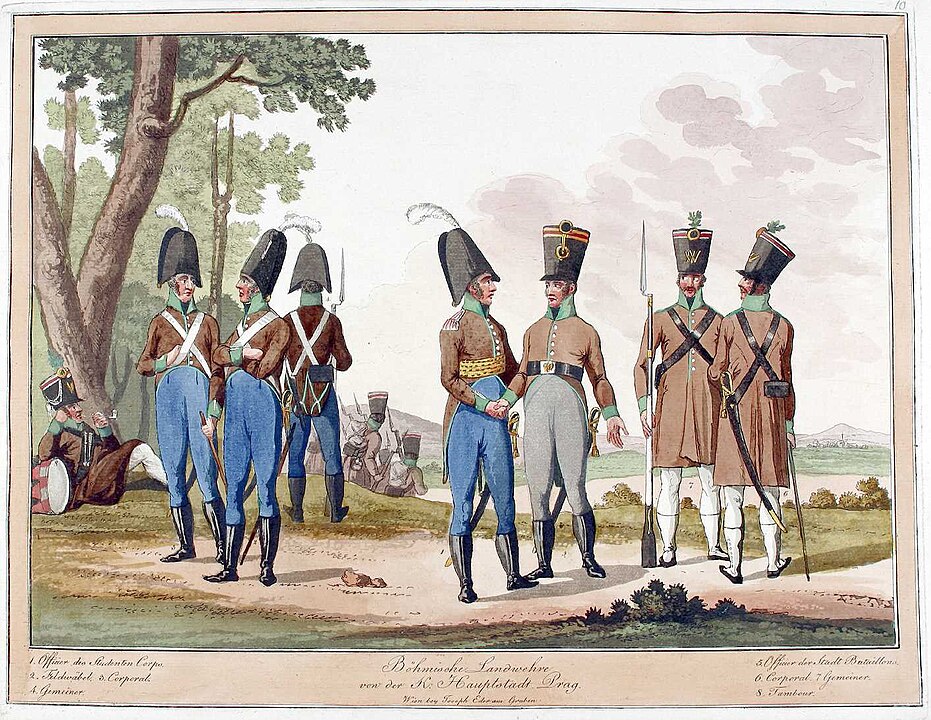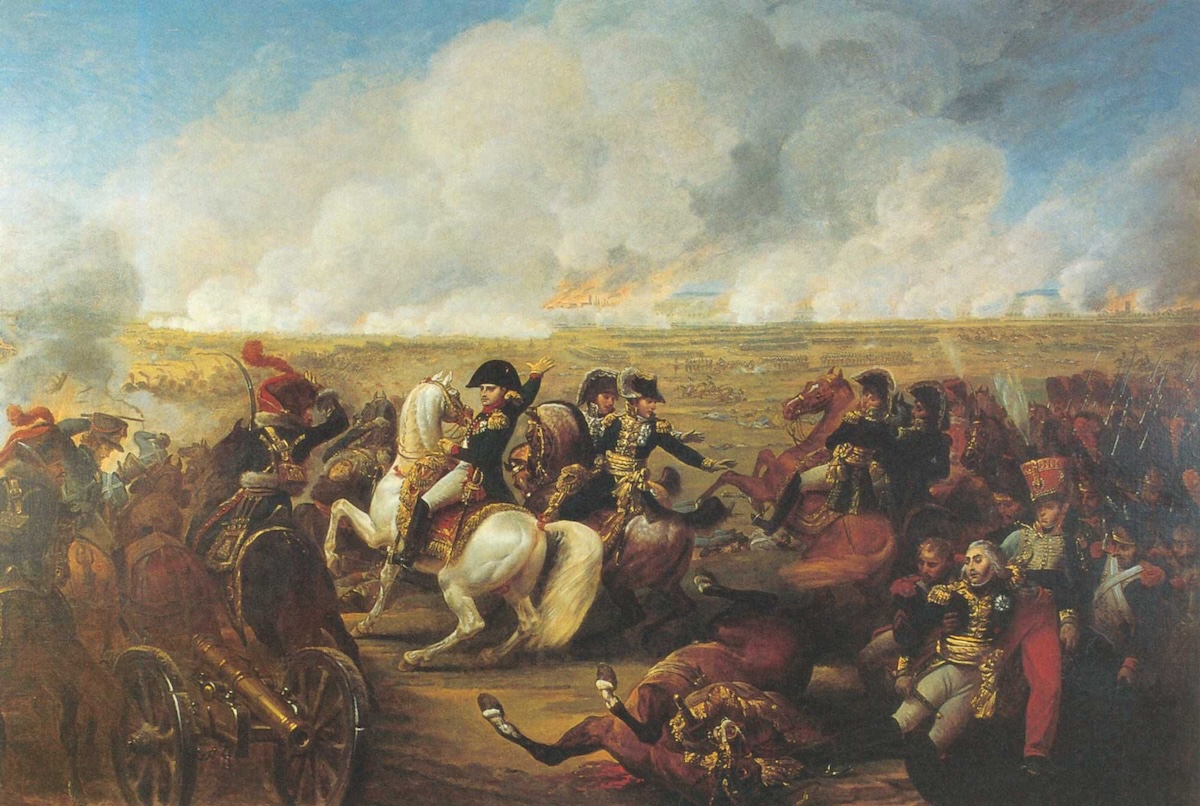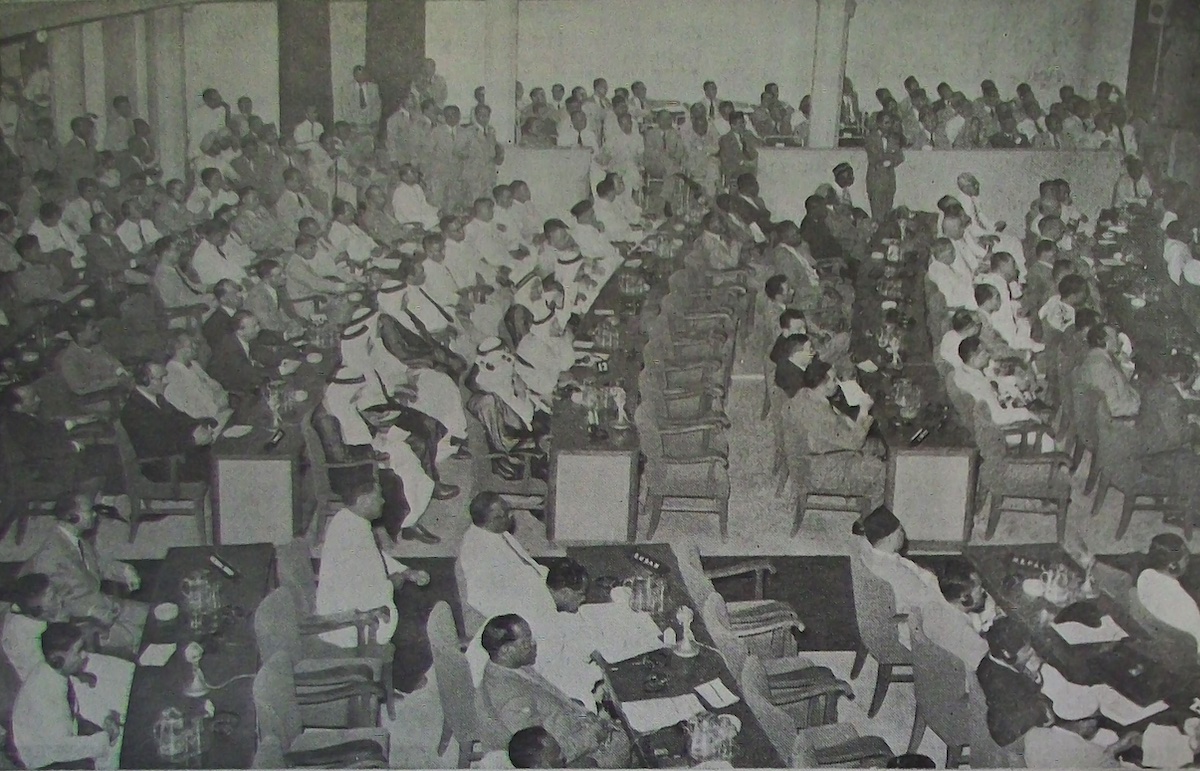After the French Revolution and the beheading of Marie Antoinette, daughter of Emperor Francis I of Austria, various European monarchies declared war on France. These monarchies formed alliances and coalitions with the aim of restoring the French Monarchy.
The Battle of Wagram, which took place between July 5 and 6, 1809, during the War of the Fifth Coalition, pitted the French Empire against the Austrian Empire near Vienna. With Napoleon Bonaparte‘s victory, the Austrians were completely decimated and compelled to seek an armistice. This triumph marked the end of the Fifth Coalition.
—>Cavalry tactics were crucial in the Battle of Wagram, with both sides employing cavalry charges to break enemy lines and exploit weaknesses in the opposing forces.
Causes of the Battle of Wagram

Opposed to the establishment of a Republic and deeply shocked by the beheading of King Louis XVI and Queen Marie Antoinette, the major European monarchies aligned with Austria to declare war on France. These alliances were termed “Coalition,” giving the wars the name “Coalition Wars.” The War of the Fifth Coalition opposed the Austrian Empire and the United Kingdom to the French Empire and Bavaria. The Battle of Austerlitz in 1805 had thwarted Emperor Francis II of Austria, forcing him to ratify the Treaty of Pressburg for peace with France in exchange for significant and humiliating concessions for the Austrian Empire.
In 1808, the accession of Archduke Charles Louis of Austria-Teschen as the supreme commander of the armies reignited hostilities with France. For several months, the Empire sought European allies, and the war resumed against France in September 1809. The Fifth Coalition was formed during the same period, comprising Austria and the United Kingdom, along with other allied smaller kingdoms opposing the French Empire.
In March 1809, the Austrian army entered Bavaria and Italy. The attack occurred earlier than anticipated by Napoleon I, and Munich was occupied in April. Initially weakened due to poor maneuvers by Commander Berthier, France eventually repelled the Austrians to Vienna with the arrival of Napoleon and reinforcements of cavalry units. The conflict stagnated near the Austrian capital, with French troops facing difficulties crossing the Danube. On July 5, 1809, the French crossed the river, and the two armies confronted each other.
Who Were the Protagonists at the Battle of Wagram?
The Battle of Wagram involved multiple belligerents. The French Empire fielded approximately 154,000–171,939 soldiers and 584–617 cannons under the command of Napoleon I himself. Napoleon’s prowess as a general established him as one of the greatest strategists and commanders in history. These forces opposed the Austrian Empire, which was numerically inferior in the battle. Archduke Charles Louis of Austria-Teschen commanded the Austrian Empire, which had 136,000–173,000 soldiers and 388–414 cannons.
As the supreme commander of the armies, Charles Louis was the only figure capable of challenging Napoleon due to his strategic acumen and recognized leadership qualities. The allies of the French Empire were unable to organize due to Austria’s preemptive attack, and the United Kingdom was unable to send reinforcements to Austria because it was already involved in Spain.
How Did the Battle of Wagram Unfold?

The Battle of Wagram commenced on July 5, 1809, spanning two days. The main theater of conflict was the plains of Marchfeld, north of the Danube. Archduke Charles and his armies were well-acquainted with the terrain, as it was dedicated to the training of the Austrian army. The Austrian commander adopted a defensive strategy, deploying troops along the Wagram River, near the southern slope and on the other side of the Russbach River. The objective was to slow down or contain potential charges from the Imperial Guard, which had already weakened the Austrian forces in the Battle of Landshut a few months earlier.
The flat terrain afforded a strategic advantage to the Austrian cannons. Crossing the Danube posed a challenge for the French army, with pontoons creating bottlenecks and rendering various contingents of the imperial army susceptible. Napoleon opted for a French counter-offensive, directing a small division to distract Austrian troops north of Lobau. Exploiting this diversion, he launched an attack from the east via the Danube, effectively encircling the Austrian army.
On the first day, the Austrian army was repelled despite several counter-offensives. The battle continued into the night, marked by nocturnal street skirmishes where reduced visibility led to numerous friendly fire incidents. The second day witnessed street fights in the surrounding villages of Wagram: Aderklaa, Aspern, and Essling. These engagements favored the Austrians, who were better organized and prepared for such strategies in confined terrain.
Napoleon chose to launch a major artillery bombardment while offering a retreat to his dispersed contingents in the villages. At 2 p.m., General Macdonald, an ally of Napoleon, penetrated the plain and managed to force the archduke’s last troops into retreat before they could launch a counter-offensive. Archduke Charles was compelled to flee, conceding victory. Napoleon’s exhausted armies did not pursue the remaining Austrian forces.
How Many Died During the Battle of Wagram?

The Battle of Wagram, occurring in 1809, stands as one of the bloodiest conflicts in the Napoleonic Wars. It was notably the deadliest battle within the Coalition Wars during that period. On the French Empire’s side, casualties include approximately 18,000 fatalities and nearly 15,000 individuals wounded or missing. Among the Austrians, losses are estimated at around 41,000 men, with 32,000 confirmed dead. Additionally, approximately 7,500 soldiers from the Napoleonic army became prisoners.
In total, nearly 75,000 individuals from both camps combined lost their lives, sustained injuries, or went missing during the battle. This toll does not account for civilian casualties, and the exact number remains unestablished. It would take the battles of Leipzig (Battle of Leipzig) and Moscow (Battle of Borodino) to match or surpass the exceptionally heavy toll of the Battle of Wagram.
While a French victory, the battle proved costly, marking the gradual decline in the effectiveness of Napoleon’s strategy. His adversaries eventually apprehended and mastered his tactics, growing increasingly cunning.
Who Won the Battle of Wagram?

Despite France emerging victorious at the end of the Battle of Wagram, the reality proves to be more complex and nuanced. Indeed, Wagram was the first battle in which Emperor Napoleon I did not achieve a truly decisive victory. The extremely significant losses on the French side considerably weakened the Napoleonic army and their morale. Nevertheless, the Austrian Empire made numerous mistakes that played in favor of the imperial armies.
Firstly, historians and commentators criticized Archduke Charles for excessive impatience and impulsiveness. While it may have worked on the first day, catching Napoleon I off guard, his impulsive actions were regrettable thereafter. Some hasty and thoughtless strategies led to the division of the Austrian army, making it more vulnerable to French offensives. His impatience prevented the arrival of reinforcements from his brother, which could have led to a French defeat.
Napoleon I precisely anticipated that the archduke would exercise patience before launching hostilities to buy time, which surprised him on the first day of the battle. This mistake, arguably the most fatal, resulted in the defeat of the Austrian army, which was forced to retreat from the second day onwards. These errors can be attributed to the youthfulness of the Archduke of Austria, who sought to establish a reputation and prove that he could single-handedly overturn Napoleon’s army.
What Were the Consequences of the Battle of Wagram?

Following the Battle of Wagram, both Austrian and French forces found themselves physically and morally exhausted. Archduke Charles, once considered the savior of Austria, sees his reputation in ruins and his legitimacy contested. Among the French, it is revealed for the first time that the Napoleonic army is not as invincible as previously portrayed. Suffering significant losses diminished the prestige of the French Emperor, who had, until then, secured overwhelming and decisive victories.
However, with Austria considerably weakened, it was compelled to withdraw, leaving the United Kingdom alone against France. This marks the end of the Fifth Coalition. Subsequent negotiations between Austria and France resulted in the Treaty of Schönbrunn on October 14, 1809, concluding the Fifth Coalition War.
—>With the Treaty of Schönbrunn, which signifies peace between Austria and France, Napoleon I demands concessions. He calls for the proclamation of the Illyrian Provinces, the result of a reorganization of territories covering part of Croatia, which were territories conquered by the Napoleonic army.
The treaty imposed strict terms for peace, including Napoleon’s recognition as the King of Spain and the requirement that the French army cede all territories it had conquered to the Empire.
Perhaps more humiliatingly, Austria is forced to betray the United Kingdom and join the Continental Blockade as an ally of France, the country that coldly executed its former Archduchess Marie Antoinette. To seal this alliance, Emperor Francis I of Austria offered his daughter, Marie Louise of Austria, in marriage to Napoleon Bonaparte.
This diplomatic union serves as additional leverage over Austria, with an implied threat to Archduchess Marie-Louise should the treaty be violated. A few years later, the Sixth Coalition War began, pitting the French Empire against, among others, the Austrian Empire.






